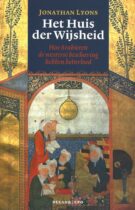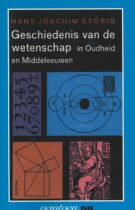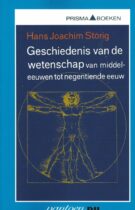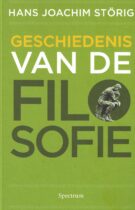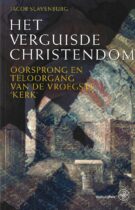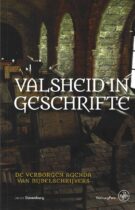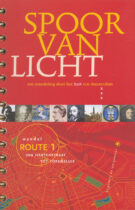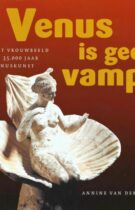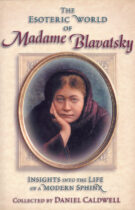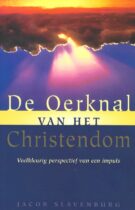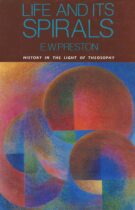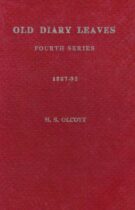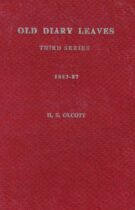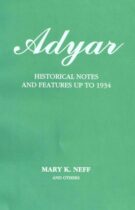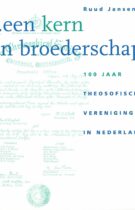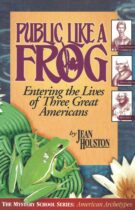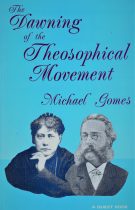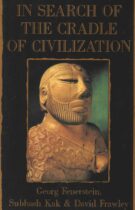Edgar Cayce over de Akasha Kronieken
Door Kevin J. Todeschi
207 Pagina’s | 2021 | Softcover | Uitgeverij Hajefa | ISBN 9789463310291
Edgar Cayce was één van de grote zieners van de uitgeverij twintigste eeuw en een grondlegger van de New Age beweging. Hoewel Cayce driekwart eeuw geleden overleed, heeft zijn boodschap voor de wereld nog niets aan helderheid en zeggingskracht verloren.
In dit boek staat Edgar Cayce’s visie op de Akasha Kronieken centraal. Deze kronieken vormen het geheugen van de mensheid. Ze bevatten alle informatie over ieder individu dat ooit heeft geleefd op aarde; iedere zin, daad, gevoel, gedachte en bedoeling die zich ooit heeft gemanifesteerd.
Cayce werkte veel met de Akasha Kronieken. Hij haalde er informatie uit die de mensen die naar hem toekwamen, hielp in te zien waar ze vandaan kwamen en waar ze mogelijk naar op weg waren. Uit de vele praktijkvoorbeelden in dit boek komt naar voren hoe iedereen uitdrukkelijk in staat is om zijn of haar leven zelf vorm te geven. Het bevat een schat aan diepe inzichten die je in staat stellen om meer te begrijpen van je verleden en je heden, waardoor je beter in staat zult zijn om te leven naar de liefde, vervulling en heelheid van je ware wezenskern.
Kevin J. Todeschi is een bestsellerauteur met meer dan twintig titels op zijn naam, spreker over heel de wereld en een expert op het gebied van droominterpretatie, soulmates en de Akasha Kronieken. Zijn werk heeft veel mensen geholpen bij het omarmen van hun persoonlijke spiritualiteit. Todeschi is directeur van de Association for Research and Enlightenment, de organisatie die is op gericht door Edgar Cayce zelf.
Het Huis der Wijsheid – Hoe Arabieren de Westerse beschaving hebben beïnvloed
Door Jonathan Lyons, vertaal door Ruud van de Plassche en Jan van de Westelaken.
276 Pagina’s | 2010 | Softcover | Uitgeverij Bulaaq, Amsterdam | ISBN: 9789056401692
Oospronkelijke titel: House of Wisdom. How the Arabs transformed Western Civilization
Het Huis der Wijsheid (bayt al-hikma) werd begin negende eeuw in Bagdad gesticht. Het was een denktank, vertaalbureau en manuscriptendepot waar de beste Arabische geleerden tot halverwege de dertiende eeuw hebben gewerkt. Ze wijdden zich aan filosofie, wiskunde en astrologie en vertaalden Griekse teksten van bijvoorbeeld Aristoteles en Plato in het Arabisch, teksten die in het Westen onbekend of in de vergetelheid waren geraakt. In Het Huis der Wijsheid maken we kennis met Arabische geleerden als al-Khwarizmi, een pionier in de algebra, met Avicenna, de beroemde arts en filosoof, met Gaber, die de scheikunde verder ontwikkelde, en Averroes, die door zijn bijdragen aan de logica van Aristoteles bekend staat als ‘de commentator’.
Terwijl de Kruistochten een aanvang namen, reisde een handvol westerse geleerden naar het Oosten om kennis te maken met hun Arabische collega’s en hun werk, dat slechts mondjesmaat in het Westen was doorgedrongen. Zo keerde de nieuwsgierige monnik Adelard van Bath van Klein-Azië naar Engeland terug met manuscripten van Euclides over astronomie en wiskunde die het aanzien van de Europese wetenschappen ingrijpend zouden veranderen. Honderd jaar later, in 1209, reisde Michael Scotus naar Palermo waar hij Arabisch leerde en de christelijke wereld versteld zou doen staan met vertalingen van Plato, Averroes en Avicenna. De vernieuwende ideeën van deze en andere geleerden lagen aan de basis van onze Renaissance.
Jonathan Lyons studeerde geschiedenis en Russisch en werkte ruim twintig jaar als redacteur en correspondent voor Reuters, hoofdzakelijk in islamitische landen. Hij is nu verbonden aan de Monash Universiteit in Melbourne.
Geschiedenis van de Wetenschap – In Oudheid en Middeleeuwen
Door Hans Joachim Störig (1915 – 2012), vertaling vanuit het Duits door P. Brommer.
225 Pagina’s | 1961 | Softcover | Het Spectrum, Amsterdam | ISBN: 9789031504220
Oospronkelijke titel: Kleine Weltgeschichte der Wissenschaft
Van Störig verscheen in de Prismareeks reeds de succesvolle Geschiedenis van de filosofie (Prisma 409/410). Met dezelfde competentie wordt hier de geschiedenis der wetenschap gegeven: wetenschap genomen in de meest uitgebreide zin, dus omvattend het geheel der gesystematiseerde menselijke kennis. Men krijgt hier derhalve een zo veelzijdig mogelijk beeld van de wetenschap in Oudheid en Middeleeuwen, waarin duidelijk de invloed naar voren komt van wijsgerige, theologische, religieuze en algemeen cultuurhistorische stromingen. Störig heeft — en met goed gevolg — een synthese beproefd van caleidoscopische facetten van het menselijk weten. Zijn werk is zo geworden tot een waarlijk ‘vormend’ boek, geschikt, ja onontbeerlijk voor ieder. Want elke discussie van actuele problemen veronderstelt enige kennis van de historische ontwikkeling der wetenschap, omdat het juist de wetenschap is die het sterkst het aanschijn der aarde gevormd heeft en van welke in hoge mate het toekomstige wel en wee der wereld afhangt. Geen ontwikkeld mens kan buiten een geschiedenis der wetenschap. Ook als naslagwerk kan het zijn dienst bewijzen. In twee latere delen van de geschiedenis der wetenschap van de 16e eeuw tot het heden behandeld worden.
Geschiedenis van de Wetenschap – Van middeleeuwen tot negentiende eeuw
Door Hans Joachim Störig (1915 – 2012), vertaling uit het Duits door P. Brommer.
267 Pagina’s | 1965 | Uitgeverij Het Spectrum, Amsterdam | ISBN: 9789031507986
Oospronkelijke titel: Kleine Weltgeschichte der Wissenschaft
In aansluiting op de Geschiedenis van de wetenschap in Oudheid en Middeleeuwen wordt hier de periode geschetst tot de 19e eeuw. De herontdekking van de klassieke Oudheid heeft een onvoorstelbaar grote invloed gehad op het denken en de wetenschap na de middeleeuwen. De botsing tussen middeleeuwse en klassieke geest leidde tot een vrijer en onafhankelijker denken. De boekdrukkunst gaf aan nieuwe gedachten een groter verspreiding en maakte de wetenschap tot een organisch geheel. Zo kon de voedingsbodem ontstaan voor de Homo universalis, de universele geleerde, en zo konden de grondbeginselen voor de moderne wetenschap worden gelegd. Een geschiedenis van de wetenschap is meer dan een opsomming van geleerden en hun denkbeelden, is meer ook dan een beschrijving van het avontuur van de menselijke geest die doordringt in nog onbekende gebieden. Störig tekent een beeld van wisselwerking tussen cultuur, wetenschap en maatschappelijk leven, een beeld dat reliëf geeft aan actuele problemen en dat laat zien hoezeer de ontwikkeling van de wetenschap ons huidige leven bepaald heeft en de toekomst van de mensheid bepalen zal. Zo is een synthese ontstaan die als onuitputtelijke bron van informatie en als naslagwerk van bijzondere waarde is in deze tijd van toenemende specialisatie, waarin de Homo universalis niet meer kan bestaan.
Geschiedenis van de Filosofie
Door Hans Joachim Störig (1915 – 2012), uit het duits vertaald door P. Brommer e.a.
855 Pagina’s |42e druk 2020, 1e dr. 1959 |Hardcover | Uitgeverij Unieboek, Het Spectrum, Amsterdam | ISBN: 978904910427
Oospronkelijke titel: Kleine Weltgeschichte der Philosophie, 1e druk 1950
Leven en werk van de belangrijkste filosofen worden in deze klassieker uitvoerig besproken. Naast een uitvoerige kennismaking met de grote denkers en denkrichtingen van het Oosten, de Klassieke Oudheid en de Middeleeuwen, passeren ook de belangrijkste denkers van de Nieuwe Tijd de revue: bijvoorbeeld Locke, Berkeley, Hume, Voltaire, Rousseau, Kant, Schelling, alsook Hegel, Spencer, Marx, Schopenhauer, Kierkegaard, Nietzsche, Bergson, Husserl, Jaspers, Sartre, Heidegger, Wittgenstein en Popper.
Hans Joachim Störig (1915-2012) studeerde geschiedenis, filosofie en rechten in Freiburg, Keulen, Koningsbergen, Bazel. Hamburg en Berlijn. Hij promoveerde in filosofie en rechten en is later werkzaam geweest als uitgever, schrijver en vertaler. Verder doceerde hij aan de universiteit van München. Sinds de eerste verschijning van dit boek heeft Störig het werk herhaaldelijk gereviseerd en uitgebreid (als laatste in 1990).
Het Verguisde Christendom – Oorsprong en teloorgang van de vroegste ‘Kerk’
Door Jacob Slavenburg
255 Pagina’s | 2e dr. 2017 (1e dr. 2016, herziene uitgave van Opus Posthuum, 2001)) | Softcover | Walburg Pers, Zutphen | ISBN: 9789462491564
Er zijn heel weinig boeken geschreven over het vroegste christendom, nog voor het ontstaan van de Bijbelse evangeliën. Dit komt mede omdat er weinig bronnen uit die periode leken te bestaan. Bij velen bestaat daardoor het onterechte beeld van een zich van aanvang af hermonisch ontwikkelende wereldkerk.
Historicus Jacob Slavenburg toont aan de hand van uitputtend bronnenonderzoek aan dat dit een vals beeld is. Er is praktisch geen enkele overeenkomst tussen de kerken en de vroegste christelijke gemeenten. De ‘oudste’ chistenen zouden zich op geen enkele wijze in de huidige kerkdiensten van vandaag herkennen. Een vastomlijnde theologie was niet aanwezig. Een duidelijke geloofsleer ontbrak. Van een canon en een vaste hiërarchie was nog geen sprake.
De auteur legt een fascinerend beeld bloot van de oergemeente voor de val van Jeruzalem. Opvallend daarin is vooral de gestalte van Jacobus, een broer van Jezus, die niet alleen de onbetwiste leider van de Jeruzalemse gemeente was, maar ook de spiritueel leidsman van de gezamnelijke gemeenten. Zo waren Paulus en Petrus hem verantwoording schuldig.
Valsheid in Geschrifte – De verborgen agenda van Bijbelschrijvers
Door Jacob Slavenburg
189 Pagina’s |9e druk 2020, (1e druk 2008)|Softcover| Walburg Pers, Zutphen | ISBN: 9789462494763
Wie waren de echte schrijvers van de evangeliën? Wie nam in de vroege kerk de beslissing over wat wel en niet in de Bijbel terechtkwam? Waarom mochten de apocriefe en gnostische evangeliën niet meer gelezen worden?
Pas generaties na Jezus’ dood werden de evangeliën samengesteld door onbekende schrijvers met een eigen agenda. Die verhalen werden in de eerste eeuwen talloze malen ‘verbeterd’om ze te laten sporen met nieuwe geloofsregels en uitgedachte dogma’s. In dat proces werden zeer oorspronkelijke en vroege geschriften vernietigd.
Spoor van Licht – Een Wandeling door het Hart van Amsterdam
Idee en concept van de Werkgroep Spoor van Licht van het Lectorium Rosicrucianum te Amsterdam.
68 Pagina’s | Tweede druk in 2013 incl. afbeeldingen | Softcover | Uitgeverij De Morgenster, Amsterdam | ISBN: 9789490712013.
Al kijkend en wandelend kan men iets ervaren van een diepere laag in de geschiedenis van Amsterdam. Amsterdam, de ruimhartige, de stad, die al zo lang een grote verscheidenheid aan individuen en groeperingen heeft aangetrokken, verwelkomd, gedragen en voortgestuwd. Een stad, waar ook eeuwenlang meer kon worden gedacht, gezegd en gedrukt dan in andere Europese steden. Een stad, die rijk is geworden door te geven: ruimte voor de vrijheid van geest. Van dit Amsterdam willen we u een deel laten zien, klein en gekoesterd, een ‘Spoor van Licht’.
Afkomstig van bladzijde 43:
” Het boek van de wereld ligt door alle streken en tijdperken van de wereld heen voor allen op de zelfde wijze open: de zelfde aarde, de zelfde hemel en de zelfde sterren zien zowel de goede als de slechte mensen, zij die voor ons waren en die na ons zullen zijn. Toch nemen wij veel dingen meer onderscheidelijk waar dan onze voorouders en onze nakomelingen meer nog dan wij. Evenzo zijn de universele begrippen […] steeds dezelfde gebleven voor man en vrouw, kind en bejaarde, Griek en Arabier, Christen en Mohammedaan, vrome en zondaar. En hieruit zullen van dag tot dag steeds rijkere schatten gedolven worden. “
Venus is geen Vamp – Het Vrouwbeeld in 35.000 Jaar Venuskunst
Door Annine van der Meer.
456 Pages | Uitgegeven in 2009 | Softcover | Academie PanSophia i.s.m. A3 Boeken, Geesteren | ISBN: 9789077408674.
In dit boek maakt Annine van der Meer een einde aan het geseksualiseerde, gedemoniseerde en patriarchale beeld van de Oervrouw. Ze rekent af met het vrouwloze beeld van de prehistorie, zoals de Vaderlandse geschiedenis ons voorschotelt. Als een ware pionier brengt Annine van der Meer orde in de chaos van de Venuskunst, de sacrale voorchristelijke vrouwelijke kunst, die te maken heeft met leven, dood en wedergeboorte. En dan blijkt, dat er geen sprake is van chaos, maar van een coherente symbooltaal, die universeel en mondiaal is. Dat vrouwelijke kunst – in tegenstelling tot mannelijke kunst – in grote hoeveelheden is vervaardigd volgens een uniform standaardmodel, dat over vele millennia is overgeleverd. Het bewijs wordt geleverd dat vrouwelijkheid gerespecteerd is en centraal geeft gestaan zonder daarbij de balans met het mannelijke in de oude egalitaire samenlevingen te verstoren.
Dit boek bestaat uit twee delen. In deel I brengt de schrijfster de Venuskunst in kaart met een typologie en classificatie van soorten en stijlen. Varianten en lichaamshoudingen plaatst ze in een chronologisch kader tegen de achtergrond van een complexer wordende samenleving. De kunst spiegelt de natuur en de man-vrouwverhouding in die cultuur. Over de hele linie laat Venuskunst een verharding en militarisering van de samenleving zien, waarin de positie van de vrouw en dus het vrouwbeeld verslechtert.
- DEEL 1: behandelt de periode 35.000 – 10.000 v. Chr. – vanaf het moment dat de vroeg-moderne mens zich in Europa verspreidt tot het moment dat de laatste ijstijd afloopt en de overgang van jagen en voedselverzamelen naar landbouw inzet.
- DEEL 2: behandelt de verschillende thema’s en de bijbehorende symbolen per cultuur en chronologisch vanaf 10.000 v. Chr. tot het jaar o. De thema’s zijn: Venus’ vormen en getallen. haar lievelingsplekken, haar partnerdieren, haar geliefde bomen en planten, haar opvallendste lichaamsdelen, haar favoriete kleding, hoofdtooi en uitrusting, en haar kenmerkende lichaamshoudingen. Tot slot is er aandacht voor Maria, die veel van Venus’ symbooltaal meeneemt naar de christelijke periode.
Afkomstig uit Hoofdstuk 6: ‘Haar favoriete Kleding, Hoofdtooi en Uitrusting’ (blz. 355):
CYPRUS
” Cyprus is het eiland van Aphrodite. Hier is door de eeuwen heen zo veel vrouwelijke kunst gevonden, dat het modebeeld zich goed laat volgen. Aan de basis ligt een oeroude natuurreligie en vruchtbaarheidscultus rond de Anassa of de soevereine, die vanaf 3.000 aantoonbaar in de kunst aanwezig is. Zij leeft voort in volksverhalen als de Righena (van het Latijnse ‘regina’ of koningin). Er wordt verhaald dat zij in velden, grotten, bronnen en bergen leeft. Het liefst verblijft zij in afgelegen grotten hoog in de bergen. Zij is liefdevol, maar kan ook wreed zijn; ook naar haar minnaar toe. Zij ondergaat Oosterse invloeden uit Egypte en Klein-Azië. Een hele tijd loopt zij naar goed oud-Oosters gebruik naakt of in doorschijnende kleding. Vanaf de 12de en 11de eeuw bereiken de Kretenzers en Grieken het eiland; ze vermengen zich met de inheemse bevolking. Nu ‘vergriekst’ de Anassa tot de Griekse godin, die later Aphrodite wordt genoemd. “
CWL Speaks – C.W. Leadbeater’s Correspondence concerning the 1906 Crisis in the Theosophical Society
By Charles Webster Leadbeater (1854 – 1934), compiled by Pedro Oliveira with a Foreword by Robert Ellwood.
316 Pages | Second printing 2018 | Paperback | Olive Tree Publishing ISBN: 9780646973050.
Charles Webster Leadbeater (1854 – 1934) joined the Theosophical Society in 1883 in London and travelled with H.P. Blavatsky (1831 – 1891) to India in 1884. He helped Col. Henry S. Olcott () in his work for Buddhist education in Ceylon, now Sri Lanka. While at the Headquarters of the Theosophical Society at Adyar, Madras, in India, he was taught some meditation exercises by one of Madame Blavatsky’s spiritual Teachers, who had accepted him as a Chela (disciple), in 1884. The exercises helped him to develop the faculty of clairvoyance.
From 1900 to 1905 he was a popular international lecturer for the TS, concentrating his visits to the United States. Some American families wanted their sons to accompany him in his travels to be trained in Theosophical work by him. In 1906, he was charged by the leadership of the American Section of the TS with giving sexual education to some boys under his care. Something still taboo in those days, but nowadays considered to be part of a normal curriculum. Following an enquiry in London, presided over by Col. Olcott, he resigned his membership of the Society.
For many, the episodes of 1906 sealed his image as an immoral man, although he was never charged or prosecuted in any country. He never defended himself of the accusations. After 110 years, all his relevant correspondence regarding that crisis is gathered together in this book. For the first time, his full thoughts and views about those events are presented to the public. Here, CWL speaks.
From page 274:
” One evening, Mr. Leadbeater, on our return to his room after our swim, told me that one of the boys had a remarkable aura. I asked which one, and he said it was the boy named Krishnamurti. I was surprised, for I already knew the boys, as they had been coming to me and to Subramanyam in the evenings to help in connection with their school home work, and it was evident that Krishnamurti was not one of the bright students. Then Mr. Leadbeater told me that Krishnamurti would become a great spiritual leader and a great speaker. I asked, ‘How great?’ As great as Mrs. Besant’? He replied, ‘Much greater’. And shortly after that he said that Krishnamurti would be the vehicle for the Lord Maitreya, the coming Teacher, who inspired Jesus. He was directed to help in training the boy for that purpose, which would be fulfilled, he told me, ‘unless something goes wrong’. This, I want to emphasize, in justice to Mr. Leadbeater. ” (Ernest Wood)
100 Years of Modern Occultism – A Review of the Parent Theosophical Society
By L.H. Leslie-Smith.
69 Pages | Independent Journal Edition | Softcover | Theosophical History Center, London | No ISBN.
From its Preface:
” Although this brief sketch, undertaken at the request of the General Council of the Theosophical Society, covers most of the important events in the first century of the Society, it is no wise a history, not even a condensed history. For that, several years of research would have been required, instead of a few weeks. The booklet is a personal appraisement of the period. “
Founded in 1985, the Theosohical History Centre seeks to promote interest in the history of the Theosophical Society and related fields.
Vedic and Mesopotamian Interactions
90 Pages | Published in 2007 | Softcover | The Adyar Library Pamphlet Series No. 62 | The Adyar Library and Research Center | ISBN: 818514155X.
The Rgveda retains a large portion of common Indo-European mythological heritage. The worship of sun, moon, fire etc. are universal motifs. In his essay, Kazanas conducts very interesting and serious studies on some common elements found in the Vedic and Mesopotamian traditions and cultures and shows that they are originated in India. Some of the themes and legends described here are the horse-sacrifice, the seven seers, the flood, the cow of plenty, the tortoise, kingship, mathematics, astronomy etc.
The Language of MA – The Primal Mother: The Evolution of the Female Image in 40,000 Years of Global Venus Art
587 Pages | Published in 2013 | Softcover | Uitgeverij A3 Boeken | ISBN: 9789082031300.
This is the first pioneering study of global ‘Venuses’, who are part of an ancient and contemporary art traditionally called ‘Venus Art’ – the Art of Primal Mother(s), the Art of the female ancestors. Venus Art reflects the consciousness of egalitarian societies of peace, in which women and feminine values play or have played a central role, in which MA or the MATER or MOTHER and the primal mothers of the clan are central.
To date Venus Art has been understood, neglected and not integrally researched. The Art has become eroticised and sexualised. The purpose of this book is to rehabilitate Venus Art with Venus seen and honored as manifestation of the divine Mother MA.
From Chapter 2 – ‘The Book in a Nutshell’ (p. 15):
” Part 1 consists of eight chapters, part 2 the same. This is no coincidence. Three and four make seven. Seven plus one makes eight. In eight begins a new octave, a new time, a new mankind. In the lemniscate of the eight. the independent feminine and masculine come together in perfect balance. By bringing the forgotten feminine into the picture, balance and connection is created with the masculine. Unity. “
Remember MA • Welcome a new art historical approach that defi nitively maps the contribution of woman to evolution and brings to an end a male world history without women. • Remember the primal mothers, who much later were called ‘Venuses’ and sometimes pin-ups. This book rehabilitates them as the first leaders of humanity. • Learn about a global feminine system of symbols that shows an astonishing consistency and coherency. • Witness how prehistoric cultures produced much more feminine art than masculine art. • Understand why the feminine was pictured so often in old and modern female-friendly societies of peace and balance. • Learn to discern an ancient primal mother from a later goddess, priestess and worshipper. • See how a male system of symbols is laid over the older feminine system of symbols; now the female image is devalued and the world is changed in a valley of tears. • Meet the lost Lady of Old Israel in images and texts and see how she is transculturally transformed into Mary, the Lady of all Nations in Christianity. Dr Annine E.G. van der Meer (1953) is a Dutch historian of religion and holds a PhD in theology from the University of Utrecht. She is the author of several books. She has travelled widely to retrace the universal hidden Mother in sacred texts, art and symbols. She is founder and president of the Dutch PanSophia Academy, school of Wisdom, where she also teaches. In July 2010 33 women of international standing in their particular fields were honoured in the ‘Manifest Female Energy’. Annine van der Meer was one of six Dutch women to be decorated. According to the manifest, they have contributed to transformation processes in the world; a new world, in which feminine and masculine energies mutually inspire each other and are growing towards a new, powerful and creative world order.
The Real St. Nicholas: Tales of Generosity and Hope from around the World
Edited and translated by Louise Carus.
214 Pages | First Quest Edition 2020. ‘NAPRA Nautilus Award Grand Winner 2003’. | Softcover, with pictures | Quest Books, U.S.A. | ISBN: 9780835608138.
‘While Santa Claus just brings toys, St. Nicholas changes lives and brings real joy’!
The Real St. Nicholas is a jubilant celebration of spiritual values and the true meaning of the holiday season. Santa Claus is only a nickname. The historical Nicholas was a fourth-century bishop in what is now modern Turkey. Over time, tales of his goodness spread as far as Karelia, bordering Finland and Russia, throughout Europe. The Dutch brought him to the New World as Sinterklaas.
While slimmer than Santa, St. Nicholas is much larger in Spirit. He is the patron Saint not only of children, but also of sailors, bakers, bankers, prisoners, pharmacists, maidens, merchants and, New York City. But the traditions around him have been lost in America. Louise Carus restores this important image of the kind, wise Elder with rare stories from Spain, Greece, Italy, Ireland, Germany, The Netherlands, France, Russia and Armenia – among other countries. Most are simple folktales of powerful virtue. We hear of how Nicholas rescues orphans and soldiers, feeds the hungry, helps hapless lowers, outwits thieves and devils, and heals the ill and lame (including an ant!). An Afterword recounts modern legends of healing and rescue told by people living in Greece today.
The result is the best such collection available in English. It is a gift to all parents, educators, story loversm and others, who long to resanctify the holidays. There’s a story for each of the thirty-one days in December, but The Real St. Nicholas can inspire us on any day of the year.
Louise Carus, Ph.D., is a Jungian analyst and the editor of Betwixt and Between and Crossroads: two books on adolescent ‘rites of passage’ recognized as classics in the field.
From Chapter – ‘Signs of St. Nicholas Today’ (p. 191):
” A miller, Fragiadakis Mixales, who lives outside of Zaros, Crete, told us this story about his daughter. It happened when the girl was about four years old and suffering from epilepsy:
‘After my daughter had had several seizures, my wife took her to our nearby St. Nicholas monastery. She laid her down to sleep just at the entrance of the monastery under an olive tree and then went into the church to pray for her healing. When my wife returned to our daughter, the little one awoke and said: ‘And old man with a white beard came and touched my hand and told me, ‘You are well now”.’
My daughter never had another seizure. She is married now, with two children, and lives in Athens. This true story is well known in my community. “
While slimmer than jolly old Santa, the historical saint is much larger in character. Celebrated as protector of the wronged and patron saint of children, Nicholas is, in essence, a Western bodhisattva: an enlightened being who serves those in need. This book restores him as an important lost archetype of the Wise Old Man, clustering stories according to such appealing themes as rescuing, nurturing, outwitting evil, and healing. Louise Carus spent two years researching and translating material to bring us the best collection available in English. It will delight parents, educators, community organizers, story lovers, and others eager to decommercialize and resanctify the holidays. Indeed, the generous spirit of the real St. Nicholas can inspire us any day of the year. “Everyone who loves a good story will want to add this book to their collection. Parents will find family values and children will discover delight in goodness all through these warm tales.” — Father Gabriel Bullock, OSB, St. Bede Abbey, La Salle, Illinois “In collecting this wonderful cauldron of stories, old and new, Louise Carus has done a great service to all who love the festival of Christmas. A much needed, “must read” book!” — John Matthews, author of The Winter Solstice
The Esoteric World of Madame Blavatsky – Insights into the Life of a Modern Sphinx
By Daniel H. Caldwell.
451 Pages | First Quest Edition 2000 | Hardcover | Quest Books U.S.A. | ISBN: 0835607941.
‘A psychological enigma, a puzzle for future generations, a Sphinx!’
So reads the self-portrait of Helena P. Blavatsky (1831 – 1891), the leading esoteric author of the nineteenth century. Others called her ‘the lady with the magical eyes’. A world traveler and student of religions, Madame Blavatsky was among the first to bring Eastern Wisdom to the West. Her writing affected W.B. Yeats, James Joyce, D.H. Lawrence, L. Frank Baum (The Wizard of Oz), Wassily Kandinsky, Piet Mondrian, Gustav Mahler, Jean Sibelius, Alexander Scriabin, and many others.
These first-hand accounts lead us into the fascinating world of Madame Blavatsky’s soirées, sites of the astounding phenomena that made her a cause célèbre. Famous as magnets for freethinking intellectuals, these gatherings were a forum for her unconventional ideas that anticipated the spiritual and ecological movements of today. But the depth of this enigmatic Sphinx – as related here by family, friends, and even enemies – transcends the fads of time.
From Chapter 1 – ‘Russia 1831 – 1849’ (p. 1):
” Helena was an exceptional child, who at an early age was aware of being different from those around her. Her possession of certain psychic powers puzzled her family and friends. At once impatient of all authority, yet deeply sensitive, she was gifted in many ways. A clever linguist, a talented pianist, and a fine artist, she was yet a fearless rider of half-broken horses, and always in close touch with nature. At a very early age she sensed that she was in some way dedicated to a life of service and was aware of a special guidance and protection. “
This volume recites firsthand accounts of the teachings and enigmas of the Theosophical Sphinx. Through it, the reader enters the fascinating world of Madame Blavatsky’s soirees — famous as magnets for freethinking intellectuals and the sites of remarkable and remarked-upon phenomena, as related here by family, friends, and enemies. Includes over 35 black and white photos from the Theosophical archives. Daniel Caldwell, Master of Library Science, is one of the world’s leading authorities on H. P. Blavatsky’s life and works.
The Practice of Dream Healing – Bringing Ancient Greek Mysteries into Modern Medicine
291 Pages | First Quest Edition 2001 | Softcover | Quest Books, U.S.A. | ISBN: 9780835607995.
A Sacred Journey to bring Soul back into Treatment.
Asklepios was the gentle Greek God of healing. Like Christ, he was said to have walked the earth performing miracle cures. His medicine was practiced by priests known as therapeutes (the first therapists) who interpreted patients’ dreams, in which the God gave advice. The results, as well-documented in literature and thousands of ancient testimonies, reveal the root of modern medical science and psychotherapy.
In this classic work, psychotherapist and Greek scholar Dr. Edward Tick explores the God as an archetype of the divine physician symbolizing the Self. What he discovers restores the foundation for a truly holistic medicine. First, he transports us through myth and history on an imaginal pilgrimage based on his journeys with patients to ancient Greek healing sites, where they recreate the dream incubation ceremonies once held in Asklepian temples. Then, from case-studies he crafts practical methods that today’s healing professionals and lay readers can use anywhere, with or without the help of specialists. His radical model shows how consulting rooms, hospitals, and any place of rest can become sanctuaries for the recovery of the whole person.
Homeric Hymn to Asklepios:
” Doctor of our ailing, Asklepios, I begin your praise,
Son of Apollo, awakened through Mother Koronis
Of the Dotion Plains, daughter of King Flegion,
Great to humanity, soother of cruel suffering.
. . . Και συ ουτω χαιρε, αναξ. Λιτομαι δε σ’αοιδη.
. . . And thus are you welcomed, Master. By this song I beseech you. “
For two decades, Dr. Edward Tick has researched and applied this age-old art in contemporary settings. Now he leads us through myth and history on an imaginal pilgrimage based on actual journeys he has made with clients to ancient healing sites. He also provides techniques we can use anywhere, without the help of specialists. His radical model shows how a consulting room, hospital, or any place of rest can be a haven for the recovery of the whole person. A review in Dream Time the Journal of the Association for the Study of Dreams, concludes with “The Practice of Dream Healing is many different books woven into one fascinating whole: travelogue, personal journey, historical narrative, mythological study, psychological inquiry. As travel writing and personal narrative, it is compelling and enjoyable to read; as historical, psychological, and philosophical inquiry, it has much to offer contemporary dreamworkers and others in the healing professions.” Edward Tick, Ph.D., has practiced psychotherapy since 1975. He began treating severely traumatized Vietnam veterans in 1979. By the mid-1980s, he was convinced that more radical transformative techniques were necessary to heal the deep wounds to the soul each survivor endured. Thus, he embarked on a worldwide exploration of traditional healing practices. He began teaching the Greek tradition and leading healing and growth workshops in the early 1990s. Since 1995, he has led eight healing journeys to Greece and Turkey, during which he has focused on the powerful dream healing techniques of Asklepios. He is the director and senior psychotherapist of Sanctuary: A Center for Mentoring the Soul in Albany, New York.
De Oerknal van het Christendom – Veelkleurig perspectief van een impuls
Door Jacob Slavenburg
223 Pagina’s | Paperback |Rozenkruis Pers, Haarlem |ISBN: 9067322776
Woorden van Jezus en Christus-verschijningen zorgden tweeduizend jaar geleden voor een explosie . . . in het hart. De charismatische beweging die daaruit ontstond en als een brede stroom uitwaaierde, werd echter steeds meer gekanaliseerd. Een spirituele kern werd tot een institutionele kerk.
De schrijver voert de lezer mee door de bonte wereld van de vroege christenen. Ooit ontlook het Christendom als een wat vreemde loot aan een in die dagen veelkleurige Joodse stam. Maar na de val van Jeruzalem in het jaar 70 verdween dat oorspronkelijke joodse christendom uit beeld. Veel opvattingen van de joodse christenen vinden we wel terug in het gnostische christendom van de tweede eeuw .Met de latere bestrijding van bepaalde opvattingen binnen dit spirituele christendom werd met het badwater ook het kind weggespoeld. Niet alleen de gnostici werden veroordeeld, zelfs de meest oorspronkelijke christenen, de joodse christenen, werden tot ketters verklaard. Toch is er in de eerste eeuwen nog sprake van een grote pluriformiteit. De oerknal trilt door in veel charismatische leraren, zoals onder meer Paulus, Valentinus, Clemens en Origenes. Deze leraren helpen hun medemens de Christusvonk in zichzelf te ontdekken en vrij te maken.
Pas in de eeuwen van de grote christelijke concilies wordt de vrijheid van denken en spreken drastisch ingeperkt. De kerk wordt een instituut dat uitmaakt wat beleden mag worden; of eigenlijk: wat niet meer gezegd, ja zelfs niet meer gelezen mag worden.
Drs. Jacob Slavenburg is een kenner van de geschiedenis van het vroegste christendom en van de gnosis.
The 75th Anniversary Book of the Theosophical Society – A Short History of the Society’s Growth from 1926 – 1950
By Josephine Ransom (1879 – 1960).
252 Pages | First edition, 1st reprint 2005 | Hardcover | Theosophical Publishing House, Adyar | ISBN: 8170594502.
” May Those who are the embodiment of Love Immortal, bless with Their Protection the Society established to do Their Will on Earth; may They ever guard it by Their Power, inspire it with Their Wisdom, and energize it with Their Activity. “ – Annie Besant (1847 – 1933).
This excellent book recording the history of the Theosophical Society from 1926 – 1950, has been painstakingly researched and is accurate in facts and shrewd in assessment. Ransom tells us: ‘I have tried to be accurate, to observe due proportion, to exercise the historian’s prerogative of impartiality, and to give a clear impression of how the great ideals of the Society are working themselves out.’ She has succeeded admirably.
Madame Blavatsky Unveiled
By Leslie Price.
44 Pages | First edition February 1986 | Softcover; (paper) leaflet | Theosophical History Centre, London | ISBN: 0948753005.
A new discussion of the most famous investigation of The Society for Psychical Research.
Founded in 1985, Theosophical History Centre seeks to promote interest in the history of the Theosophical Society and related fields. The paper was first presented on 12 April 1983 and it was subsequently made available in draft in both the parapsychological and theosophical communities.
From page 1:
” Madame Blavatsky, the co-founder of the T.S. was born in 1831. In ‘Spiritual Magazine’, April 1872, she was reported to be directing a Spiritualist society in Cairo, Egypt and after her arrival in New York in 1873 reports of paranormal phenomena around her began to appear regularly in the Spiritualist papers. She was corresponding secretary of the T.S., founded in New York in 1873, of which Col. Henry Olcott was president until his death in 1907. The two chief founders left the U.S.A. for India in 1878 via London, and transferred T.S. headquarters first to Bombay and in 1882 to Adyar. It was during a visit by the founders to Europe in May 1884 that the S.P.R. Committee was formed. The S.P.R, itself was only two years old, and the personnel of Spiritualism, Theosophy and Psychical Research were not then as polarised as they later became. “
Life and its Spirals – History in the Light of Theosophy
By E.W. Preston.
167 Pages | Softcover | Published in 1962, first reprint 1990 | Theosophical Publishing House, Adyar | ISBN: 8170591376.
This companion Volume to The Earth And Its Cycles deals with history in the Light of Theosophy and is based on lectures delivered at the School of the Wisdom, Adyar, Madras. The general principles of evolutionary psychology were first expounded by Professor J.E. Marcault in The Evolution Of Man and were illustrated from the history of science in Studies In Evolutionary Psychology by E.W. Preston. and C.G. Trew. Both these books are now out of print. The present writer, convinced of the validity of these principles has, with permission, selected and expanded the material so that the theory may again be available to students.
- PART I – Introduces the concept of life as an expanding spiral in Nature and man.
- PART II – Deals with modern races and their psychology.
- PART III – Is an attempt to see the working-out of these ideas in the present and future.
From Chapter IX – ‘The Fifth Root Race, Aryan or Indo-European’ (p. 70):
” The races of men are not end-on, but overlap in time as do the members of a family. Each has it own cycle and reaches the various levels of consciousness successively. Each is influenced by the other and, in the later stages, tends toward similarity of level. Before the Fifth Race was founded the Fourth Race had spread throughout the world and the majority of peoples of the world today are its descendants. […] In The Secret Doctrine Madame Blavatsky discusses this subject of the overlapping of the races. She points out that there is ‘an enormous overlapping of one Race over the Race that succeeds it, though in characters and external type the elder loses its characteristics, and assumes the new features of the younger Race’. Further, she adds that ‘even now (1888) the new Race and races are preparing to be formed’, and that it is in America that the transformation will take place, and has already silently commenced. The Americans of the United States have already become a nation apart. They are, in short, the germs of the sixth sub-race, and in some few hundred years more, will become the pioneers of that race, which must succeed to the present European or fifth sub-race. After this, in about 25.000 years, they will launch into preparations for the seventh sub-race. “
Old Diary Leaves – Volume IV 1887 – 1892
By Henry Steel Olcott (1832 – 1907).
537 Pages | First printed 1910, second edition 1931, third printing 1975 | Hardcover | Theosophical Publishing House, Adyar | ISBN: 0835674843.
It is six years since the Third Series of Old Diary Leaves appeared in book form. and it is nine years since the contents of the present Volume were published in the pages of The Theosophist. The author, Henry Steel Olcott, passed over in 1907, and as all who knew him well are aware, the publication of the whole of this ’true history of the Theosophical Society’ was a matter that lay near his heart. There still remains sufficient material to fill one, if not two, additional Volumes, and it is hoped this will appear in due course, for the longer the lapse of time that separates the present membership of the Theosophical Society from its early history, the more important it is that the facts should be placed on record.
For the earlier part of the story, relating to America and India, there was no living authority so well able to bare witness to the facts as the late Co-Founder of the Society. In this present Volume, however, we traverse a period when, owing to to the world-wide spread of the organisation, the touch of the President with the whole of the Society was not so close, and maybe there are those well qualified to write of the development of different Sections, who could effictively supplement the present history so far as their own country is concerned. But such sectional or national histories remain to be written, and in the meantime the record of Colonel Olcott is here to read – and inwardly digest.
From Chapter XXIII – ‘From Stockholm to Kyoto (p. 407):
” The ladies of our local Branch had organised a charming scheme of moral and religious instruction for children, to which they gave the name ‘The Children’s Hour’. A special exhibition of it was given for my information, and it delighted me very much. The motive was to impress upon the youthful minds the idea of the fundamental resemblance between the world religions and the advisability of learning to be kind and tolerant to all men, of whatsoever race or creed. A senior girl represented Theosophia, and other the Founders of religions – Krishna, Zoroaster, Gautama Buddha, Christ, Mohammed, etc. Each of these held a staff carrying a symbolical pennant. A simple, yet excellent dialogue was framed, in which Theosophia put questions to each of the flag-holders, to give him or her the chance to quote from the Scriptures of the Founder of that religion; verses, which embodied the Theosophical spirit. The children wore pretty dresses, there was some little marching and other exercises, and all seemed to enjoy the occasion. “
Old Diary Leaves – Volume III 1883 – 1887
By Henry Steel Olcott (1832 – 1907).
460 Pages | First printed 1904, second edition 1929, reprinted in 1972 | Hardcover | Theosophical Publishing House, Adyar | ISBN: 0835674800.
The first Volume of these historical sketches covered the period from the meeting of Madame Blavatsky (1831 – 1891) and myself, Henry Steel Olcott, in 1874, to our departure from New York for Bombay in December, 1878. The second Volume tells of our adventures in India and Ceylon, the formation of Branches, the giving of lectures, healings of the sick by hundreds, occult phenomena produced by H.P.B. etc., and brings us down to the Autumn of 1883: at this time we take up the thread of narrative, and go forward to the Month of May, 1887.
I think the reader will agree with me that the subject-matter of this third Volume possesses absorbing interest, quite equal to that in its two preceding Volumes, if not greater. Accounts are given among other things of my meetings with several of the ‘Masters’ in the course of my travels, and of the results of the same, of our removal of the Society’s Headquarters from Bombay to Madras, of H.P.B.’s last departure from her beloved Indian home into exile of an European residence. The troublous time of the Coulomb conspiracy are dealt with in this Volume and the true story of the S.P.R.
From Chapter XXVII – ‘The Opening Ceremony’ (p. 403):
” We are together, Ladies and Gentlemen, upon an occasion that is likely to possess an historical interest in the world of modern culture. The foundation of a Library of such a character as this is among the rarest of events, indeed, it be not unique in modern times. We need not enumerate the great libraries of Western cities, with their millions of Volumes, for they are, rather, huge storehouses of books; not the collections of Oriental literature at the India Office, and in the Royal and National Museums of Europe; nor even the famed Saraswati Mahal, of Tanjore: all these have a character different from our Adyar Library, and do not compete with it. Ours has a definite purpose behind it, a specific line of utility marked out for it from the beginning. It is to be an adjunct to the work of the Theosophical Society; a means of helping to effect the object for which the Society was founded, and which is clearly stated in its constitution. Of the three declared aims of our Society, the first is to form a nucleus of the Universal Brotherhood of Humanity, without distinction of race, creed, or color. The second is to promote the study of Aryan and other Eastern literatures, religions and sciences. “
Adyar- Historical Notes & Features up to 1934
By Mary Katherine Neff (1877 – 1948) and others with a foreword by Curuppumullage Jinarājadāsa (1875 – 1953).
54 Pages | First edition 1934; published as A Guide to Adyar, second edition 1999 | Softcover | Theosophical Publishing House, Adyar | ISBN: 8170593328.
From Java westwards to Vancouver, from Iceland southwards to New Zealand, through the three Americas, North, South and Central, and in the islands of the Antilles, wherever live and work the Theosophists among whom I have been, the word Adyar represents not only a place but a vision of hope for mankind. The home of the Theosophical Society – the ‘Parent Society’ as it has been called, from which have now branched several independent offschoots – is for tens of thousands that place where flies a wonderful flag of idealism.
This idealism, which Adyar bodies forth is represented by a group of theosophical workers from many lands, and representing all the world faiths, who toil to make of all the nations and of all the religions one indivisible whole. To build bridges between people and people by proclaiming the power of the ideal of brotherhood, to build bridges between faith and faith, science and religion, between work and art, by stating to a modern world the old truths of Divine Wisdom, this is Adyar’s work day by day . . .
From page V:
” A place between the river and the seas,
Divine and filled with an almighty peace.
You, who have heard the sound of angel’s wings
And, answerless, have questioned without cease,
Rest here, and learn the very Scheme of Things. “
- Isabel Foulkes.
100 Years of Theosophy – History of the Theosophical Society in America
By Joy Mills (1920 – 2015).
215 Pages | First edition 1987 | Softcover | Quest Books, U.S.A. | ISBN: 0835602354.
Theosophical history seldom lacked the colorful personalities and intriguing situations that always lend piquancy to human narratives.
Beginning with ‘Birthing and Growing Pains’, concluding with ‘A New Vision is Granted’, historian Joy Mills relates the founding, the growth, the goals achieved and not achieved, the momentous and the less significant vicissitudes that accompanied the theosophical movement in America.
In this meticulously researched work, Mills captures the intense dynamics, the human drama, that is inevitably part and parcel of any revolutionary movement away from society’s established religious pattern. This history of The Theosophical Society in America is, in a very real sense, the history of a small group of spiritually dedicated individuals; people determined to establish a nucleus of Universal Brotherhood and to encourage a search for ‘Truth’ in this world of illusions, dilemmas, sufferings and satisfactions.
100 Years of Theosophy is a definite overview of the evolution of Theosophy and the Theosophical Society in the United States, But it is necessarily more. It is also the story of the people involved. Their daring, their commitment. Their extraordinary spiritual perspective. Their quarrels and their caring. So complete is this chronicle that Dr. Ellwood suggests that it ‘is certain to be the standard history of the Theosophical Society for years to come. ‘
Sophia – Goddess of Wisdom, Bride of God
By Caitlin Matthews.
430 Pages | First Quest Edition 2001, third printing 2009 | Quest Books, U.S.A. | ISBN: 9780835608015.
Sophia, or ‘Wisdom’ in Greek, has been revered in many forms throughout history. From the Dark Goddess of ancient Anatolia; to her Egyptian, Greek, Celtic, and Cabalistic manifestations; to her current forms as Mary and the orthodox St. Sophia. In the Gnostic Gospel of Thomas, Sophia sits with God until the creation. Then She falls into matter and becomes manifest in every atom, permeating all things ‘like the sparks that run through charcoal’, as Matthews says. While God is out there,” the Goddess is in here: the mother-wit of practical inspiration and compassion at the heart’s core.
‘ Anyone interested in the feminine face of God throughout the ages will find Sophia an illuminating experience. Caitlin Matthews’ scholarship connects us to past, present, and future in the very depths of our femininity. ‘ – Marion Woodman, Jungian analyst and author of Bone: Dying into Life.
From Chapter 1 – ‘The Black Goddess’ (p. 6):
” The Black Goddess lies at the heart of spiritual knowledge, which is why her image continually appears within many traditions as the Veiled Goddess, the Black Virgin, the Outcast Daughter, the Wailing Widom, the Dark Woman of Knowledge. Our own search for the Goddess is one, that is begun in darkness and unknowing. Ours is the knowing ignorance of the child in the mother’s womb: we have to be born, and we are frightened of the extra womb dimension. Once out of that womb, we begin to be terrified about our origins. But one of the prophecies of Sophia is: ‘I will give thee the treasures of darkness and hidden riches of secret places. ‘ Those treasures of the Divine Feminine liep deep within us, waiting to be discovered . . . “
This definitive work comprehensively establishes a realistic Goddess theology for Westerners in the twenty-first century: – grounding spirituality in daily life and the natural world – learning to work playfully and play seriously – ending the gender war to enjoy sacred marriage Caitlin Matthews is a world-celebrated teacher of Western spirituality and author of over thirty books. With her husband and frequent coauthor John Matthews, she founded the Foundation of Inspirational and Oracular Studies, in their native Great Britain.
Mencius
By Mencius (372–289 BC or 385–303 or 302 BC), translation and introduction by D.C. Lau.
280 Pages | First published 1970 | Paperback | Penguin Books, London | ISBN: 0140442286.
With an introduction by D.C. Lau.
” The Mencius is the most beautifully written and perhaps the most authorative of the Four Books that make up the essential Confucian corpus. “
As centralized government replaced feudalism in China, the ideas of Confucius (551 – 479 B.C.) faced the challenge of increasing cynicism. It was Mencius, in the years just after 320 B.C., who adapted them to the new age and thus helped to formulate a Confucian orthodoxy that has remained deeply influential ever since. Whether he is expounding his doctrine of the basic goodness of human nature – the ‘original heart’, which can be lost or overwhelmed by our selfish impulses – developing his method of argument by analogy or offering strikingly modern views on the duties of the subjects and their rulers and the evils of war, Mencius is always fascinating and often profound. This superb translation, complete with a masterly Introduction and Appendices on the historical and philosophical background, presents him directly to the English reader.
. . . Een Kern van Broederschap – 100 Jaar Theosofische Vereniging in Nederland 1897 – 1997
Door Ruud Jansen.
228 Pagina’s | Jubileumboek, uitgegeven in 1997 | Hardcover, incl. Noten, Register & Illustraties | Uitgeverij der Theosofische Vereniging in Nederland, Amsterdam | ISBN: 906175725.
The Theosophical Society werd in 1875 opgericht te New York door Helena Petrovna Blavatsky (1831 – 1891) en enkele anderen. De belangrijkste doelstelling van deze vereniging is het vormen van een kern van Broederschap zonder onderscheid van ras, geloof, geslacht, kaste of huidskleur. Daarnaast heeft men zich het aanmoedigen van een vergelijkende studie van godsdienst, filosofie en wetenschap en het onderzoeken van de vermogens, die in de mens sluimeren ten doel gesteld.
Sinds 1878 is het Hoofdkwartier van deze internationale vereniging gevestigd te Adyar, Madras, India. De Theosofische Vereniging in Nederland – de Nederlandse Afdeling van de Theosophical Society – werd in 1897 opgericht. Dit boek bevat het verhaal van honderd jaar Theosofie in Nederland. In de vorige eeuw hadden in het Westen nog maar weinig mensen gehoord van begrippen als yoga, karma, reïncarnatie, aura’s en chakra’s. Het is de verdienste geweest van Mevr. Blavatsky dat deze termen nu gemeengoed geworden zijn in onze cultuur. Vooral in de wereld van de New Age wordt veelvuldig geput uit Theosofische bronnen.
In Nederland is de Theosofische Vereniging na een bloeiperiode in de twintiger jaren van de 20ste eeuw, nu veel minder bekend dan de talloze New Age groeperingen, die de laatste decennia zijn opgekomen. Vanwege haar honderdjarig bestaan is zij echter in staat te verwijzen naar diepere achtergronden en een samenhangend esoterisch wereldbeeld te schetsen.
Afkomstig uit Hoofdstuk 1 – ‘Inleiding’ (blz. 11):
” De Theosophical Society werd opgericht om allen samen te brengen, die een helder inzicht trachten te verkrijgen in de ware aard van de mens en de samenstelling van het universum. De Society streeft drie doeleinden na:
- Het vormen van een kern van de Universele Broederschap der Mensheid zonder onderscheid van ras, geloof, geslacht, kaste of huidskleur.
- Het aanmoedigen van de vergelijkende studie van godsdienst, wijsbegeerte en wetenschap.
- Het onderzoeken van de onverklaarde natuurwetten en van de vermogens, die in de mens sluimeren.
De Theosophical Society kent geen vastomlijnde leer of dogma’s, maar biedt wel een aantal thema’s aan, die als uitgangspunt kunnen dienen voor persoonlijke geestelijke ontwikkeling. “
Public Like a Frog – Entering the Lives of Three Great Americans
By Jean Houston.
294 Pages | A Quest Original 1993 | Softcover | Quest Books, U.S.A. | ISBN: 0835606945.
Come to the Mystery School in this first of a three-book series drawn from Jean Houston’s acclaimed Seminars.
In this Soul-stirring exploration into three uniquely American lives, internationally known psychologist, philosopher, spiritual guide, and ‘master teacher’ Jean Houston weaves an evocative tapestry of biography, psyche, history, culture, and spirit. Through provocative storytelling, searching analysis, and deep experiental processes, the lives of Emily Dickinson, Thomas Jefferson and Helen Keller are mined for transpersonal and archetypal gold.
- Celebrate the senses with Emily Dickinson; proclaim your own ‘Declaration of Interdependence’ with Thomas Jefferson; step across the frame into the imaginal world with Helen Keller.
- Discover that the giants of our American past are archetypes with as much transformational power as any figures from mythology.
- Experience the possible human and in so doing, maximize your own potential for creativity, leadership and sensitivity.
From Part I – ‘Emily Dickinson’ (p. 55):
” The Daisy follows soft the Sun –
And when his golden walk is done –
Sits shyly at his feet –
He – waking – finds the flower there –
Wherefore – Marauder – art thou there?
Because, Sir, love is sweet!
We are as the Flower – Thou the Sun!
Forgive us, if as days decline –
We nearer steal to Thee!
Enamored of the parting West –
The peace – the flight – the Amethyst –
Night’s possibility! “
The Dawning of the Theosophical Movement
By Michael Gomes.
248 Pages | First edition 1847 | Softcover | Quest Books, U.S.A. | ISBN: 0835606236.
It all began in 1874 on a farm in Chittenden, Vermont, at that time a mecca for spiritualists. There, Helena Petrovna Blavatsky (1831 – 1891), Russian born noblewoman, world traveler, respected psychic, outspoken iconoclast, first met Henry Steel Olcott (1832 – 1907), lawyer, journalist, Civil War administrative hero. It was on November 17, 1875 that this initial meeting culminated in the founding of the Theosophical Society.
Historical researcher Michael Gomes charts the dramatic origins of the theosophical movement, one of the most influential philosophical systems to arise during the last hundred years. In this skillfully woven story of the early years of theosophy, the author re-creates the key events involving Blavatsky, Olcott and a small group of like-minded occultists. His account covers the publication of Blavatsky’s ‘occult encyclopedia’ Isis Unveiled, concluding with the pilgrimage to India by the ’theosophical twins’.
In Search of the Cradle of Civilization – New Light on Ancient India
By Georg Feuerstein (1947 – 2012), Subhash Kak and David Frawley.
341 Pages | Published in 1995, second edition 2001 | Softcover | Quest Books, U.S.A. | ISBN: 0835607410.
Contrary to the schoolbook notion, the real cradle of civilization may well have been, not Sumer, but India. This pathbreaking work completely revisions ancient history and suggests that by understanding how our ancestors faced their problems of existence, we can find important answers to our own unprecedented crises.
The authors cite the latest archaeological, geological, and linguistic evidence to show that the ancient Indians had a highly evolved culture that has influenced the Western world decisively and still has much to teach us today. They find the magnificent sacred text. the Rig-Veda, to be much older than assumed, and they decode the profound spiritual Wisdom hidden in its symbols, metaphors, and myths. They also unravel the astonishing mathematical and astronomical code hidden in the Vedic hymns.
From Chapter 2 – ‘The Vedas: Pyramids of the Spirit’ (p. 16):
” The Sanskrit word Veda means literally ‘knowledge’ or ‘Wisdom’. The term is applied to the four ancient collections of hymns – the ‘Rig-Veda’, ‘Yayur-Veda’, ‘Sama-Veda’ and ‘Atharva-Veda’. These hymnodies, about which we will say more shortly, are deemed to be records of revealed Wisdom. They are in fact the largest body of sacred literature surviving from the ancient world. For literally thousands of years they have been passed down faithfully by special families within the brahmin communities of India.
The transmission of this sacred knowledge appears to have been primarily by word of mouth, usually from father to son, generation after generation. The Vedic lore, thought of as divine revelation, was kept in such high regard that every word was painstakingly memorized. Even when the original meaning of many of the words had been lost, the brahmins vigorously adhered to the ideal of remembering and reciting the hymns with utmost fidelity. After the passage of several thousand years, only one uncertain reading of a single word can be found in the entire Rig-Veda (VII.44.3), the oldest of the four Vedic hymnodies. “
Het Bijzondere Leven en de Invloed van Helena Blavatsky – Stichster van de Moderne Theosofische Beweging (2de herziene druk 2008)
Door Sylvia Cranston (Anita Atkins) (1915 – 2000) en research assistent Carey Williams.
651 Pages | Eerste druk 1995, tweede herziene druk 2008; vertaling van de Engelse third and revised edition | Hardcover | Theosophical University Press Agency, Den Haag | ISBN: 9789070328719.
Engels origineel: HPB: The Extraordinary Life and Influence of Helena Blavatsky, Founder of the Modern Theosophical Movement | Published in 1993 | Path Pub. House, Sausalito, California; in cooperation with the Institute of Noetic Sciences | ISBN: 9780966211511.
Deze uitgebreide en zeer volledige biografie is het resultaat van 14 jaar onderzoek en schrijven, en geeft een fascinerend verslag van het leven en werk van Helena Petrovna Blavatsky (1831 – 1891). Onschatbaar bronnenmateriaal, oorspronkelijk in het Russisch geschreven, werd speciaal voor dit boek vertaald.
H.P. Blavatksy was een van de stichters van de Theosophical Society in New York in 1875. In het Westen gaf ze een grote impuls door ideeën zoals karma, reïncarnatie, spirituele ontwikkeling en de zevenvoudige samenstelling van de mens meer bekendheid te geven; in het Oosten moedigde ze een heropleving van het oorspronkelijk hindoeïsme en boeddhisme aan. Haar geschriften waren, en zijn nog steeds, een bron van inspiratie voor veel kunstenaars, schrijvers, componisten, filosofen en wetenschappers.
Door haar wereldwijde reizen, contacten met verschillende mystieke tradities en hun adepten, en de ontwikkeling die zijzelf heeft doorgemaakt, was haar leven bijzonder boeiend. Ze streed krachtig tegen de verstarde en materialistische ideeën in religie en wetenschap. Haar leven stond in het teken van 1 belangrijk doel: om de tijdloze wijsheid opnieuw onder de aandacht te brengen en daardoor universele broederschap te versterken.
Afkomstig uit Hoofdstuk 4- ‘De Volgende Eeuw: van Yeats tot Thornton Wilder en verder’ (blz. 454):
” Dat de belangstelling voor Yeats voor HPB vanaf het begin serieus was, kan worden afgeleid uit enkelen van zijn brieven uit die periode. Hij schreef aan John O’Leary:
Kom haar opzoeken als je in Londen bent. Ze is de meest menselijke persoon die er is, ze is als een oude boerenvrouw en is volkomen toegewijd: haar hele leven bestaat alleen uit zitten in een grote stoel met een pen in haar hand. Al jarenlang schrijft ze 12 uur per dag. “
In Honour of Dr. Annie Besant – Lectures by Eminent Persons (1952 – 1988)
By Annie Besant (1847 – 1933) with a Foreword by Radha Burnier – 7th international president (1980 – 2013) of the Theosophical Society. Preface by Dr. C.V. Agarwal, general secretary of the Indian Section of the Theosophical Society.
339 Pages | Published in 1990 | Softcover | Theosophical Publishing House, Adyar | No ISBN.
This publication highlights lectures delivered by eminent persons (1952 – 1988) in memory of the great servant of India and of humanity, Dr. Annie Besant (1847 – 1933) – ‘Lover of Truth’ and ‘Friend to all Creatures’. Twenty-four lectures by for instance I.K. Taimni (1898–1978), Achyut Patwardhan (1905 – 1992), Indira Priyadarshini Gandhi (1917 – 1984) and C.P. Ramaswami Iyar (1879 – 1966) are included, dealing with:
- The role of India
- Man: his problems and role
- Philosophical presentations
- The modern crisis.
 Bezig met bijwerken…
Bezig met bijwerken…
